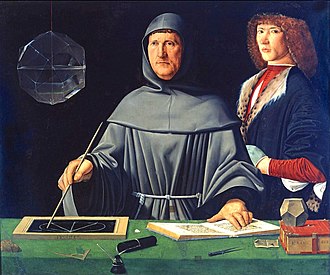15th century







== 15th Century ==
The 15th century was the century which lasted from January 1, 1401, to December 31, 1500. It is considered part of the Late Middle Ages, the period in European history which followed the Middle Ages and preceded the Early Modern period.
Historical Context[edit]
The 15th century was marked by significant events and developments in various parts of the world. In Europe, it was a time of transition from the medieval period to the Renaissance. The century saw the fall of the Byzantine Empire with the Fall of Constantinople in 1453, which marked the end of the Middle Ages and the beginning of the Renaissance.
Europe[edit]
In Europe, the 15th century was characterized by the rise of powerful nation-states, the decline of feudalism, and significant cultural and intellectual developments. The Hundred Years' War between England and France came to an end in 1453, leading to the consolidation of both nations. The War of the Roses in England, a series of civil wars for control of the throne, also took place during this century.
The Renaissance, a cultural movement that began in Italy in the late 14th century, flourished during the 15th century. This period saw a renewed interest in the classical art, literature, and learning of Ancient Greece and Ancient Rome. Notable figures of the Renaissance include Leonardo da Vinci, Michelangelo, and Niccolò Machiavelli.
Asia[edit]
In Asia, the 15th century was a period of significant change and development. The Ming Dynasty in China saw a period of stability and prosperity. The Ottoman Empire continued to expand, capturing Constantinople in 1453 and marking the end of the Byzantine Empire. In Japan, the Muromachi period was characterized by the rise of the samurai class and the establishment of the Ashikaga shogunate.
Americas[edit]
In the Americas, the 15th century saw the rise of powerful civilizations such as the Aztec Empire in Mesoamerica and the Inca Empire in South America. These civilizations developed complex societies with advanced agricultural practices, impressive architectural achievements, and rich cultural traditions.
Africa[edit]
In Africa, the 15th century was marked by the rise of powerful kingdoms and empires such as the Mali Empire and the Songhai Empire. These empires were known for their wealth, trade networks, and centers of learning, such as the city of Timbuktu.
Key Events[edit]
- 1401: The University of St Andrews is founded in Scotland.
- 1415: The Battle of Agincourt takes place during the Hundred Years' War.
- 1453: The Fall of Constantinople marks the end of the Byzantine Empire.
- 1492: Christopher Columbus reaches the Americas.
- 1494: The Treaty of Tordesillas divides the newly discovered lands outside Europe between Portugal and Spain.
Related Pages[edit]
- Middle Ages
- Renaissance
- Byzantine Empire
- Hundred Years' War
- Fall of Constantinople
- Ming Dynasty
- Ottoman Empire
- Aztec Empire
- Inca Empire
- Mali Empire
- Songhai Empire
| Millennium |
|---|
| Centuries |
|
| Timelines |
|
| State leaders |
|
| Decades |
|
|
| Expression error: Unrecognized word "th". |
| Expression error: Unrecognized word "th". |
Ad. Transform your life with W8MD's Budget GLP-1 injections from $75


W8MD offers a medical weight loss program to lose weight in Philadelphia. Our physician-supervised medical weight loss provides:
- Weight loss injections in NYC (generic and brand names):
- Zepbound / Mounjaro, Wegovy / Ozempic, Saxenda
- Most insurances accepted or discounted self-pay rates. We will obtain insurance prior authorizations if needed.
- Generic GLP1 weight loss injections from $75 for the starting dose.
- Also offer prescription weight loss medications including Phentermine, Qsymia, Diethylpropion, Contrave etc.
NYC weight loss doctor appointmentsNYC weight loss doctor appointments
Start your NYC weight loss journey today at our NYC medical weight loss and Philadelphia medical weight loss clinics.
- Call 718-946-5500 to lose weight in NYC or for medical weight loss in Philadelphia 215-676-2334.
- Tags:NYC medical weight loss, Philadelphia lose weight Zepbound NYC, Budget GLP1 weight loss injections, Wegovy Philadelphia, Wegovy NYC, Philadelphia medical weight loss, Brookly weight loss and Wegovy NYC
|
WikiMD's Wellness Encyclopedia |
| Let Food Be Thy Medicine Medicine Thy Food - Hippocrates |
Medical Disclaimer: WikiMD is not a substitute for professional medical advice. The information on WikiMD is provided as an information resource only, may be incorrect, outdated or misleading, and is not to be used or relied on for any diagnostic or treatment purposes. Please consult your health care provider before making any healthcare decisions or for guidance about a specific medical condition. WikiMD expressly disclaims responsibility, and shall have no liability, for any damages, loss, injury, or liability whatsoever suffered as a result of your reliance on the information contained in this site. By visiting this site you agree to the foregoing terms and conditions, which may from time to time be changed or supplemented by WikiMD. If you do not agree to the foregoing terms and conditions, you should not enter or use this site. See full disclaimer.
Credits:Most images are courtesy of Wikimedia commons, and templates, categories Wikipedia, licensed under CC BY SA or similar.
Translate this page: - East Asian
中文,
日本,
한국어,
South Asian
हिन्दी,
தமிழ்,
తెలుగు,
Urdu,
ಕನ್ನಡ,
Southeast Asian
Indonesian,
Vietnamese,
Thai,
မြန်မာဘာသာ,
বাংলা
European
español,
Deutsch,
français,
Greek,
português do Brasil,
polski,
română,
русский,
Nederlands,
norsk,
svenska,
suomi,
Italian
Middle Eastern & African
عربى,
Turkish,
Persian,
Hebrew,
Afrikaans,
isiZulu,
Kiswahili,
Other
Bulgarian,
Hungarian,
Czech,
Swedish,
മലയാളം,
मराठी,
ਪੰਜਾਬੀ,
ગુજરાતી,
Portuguese,
Ukrainian
